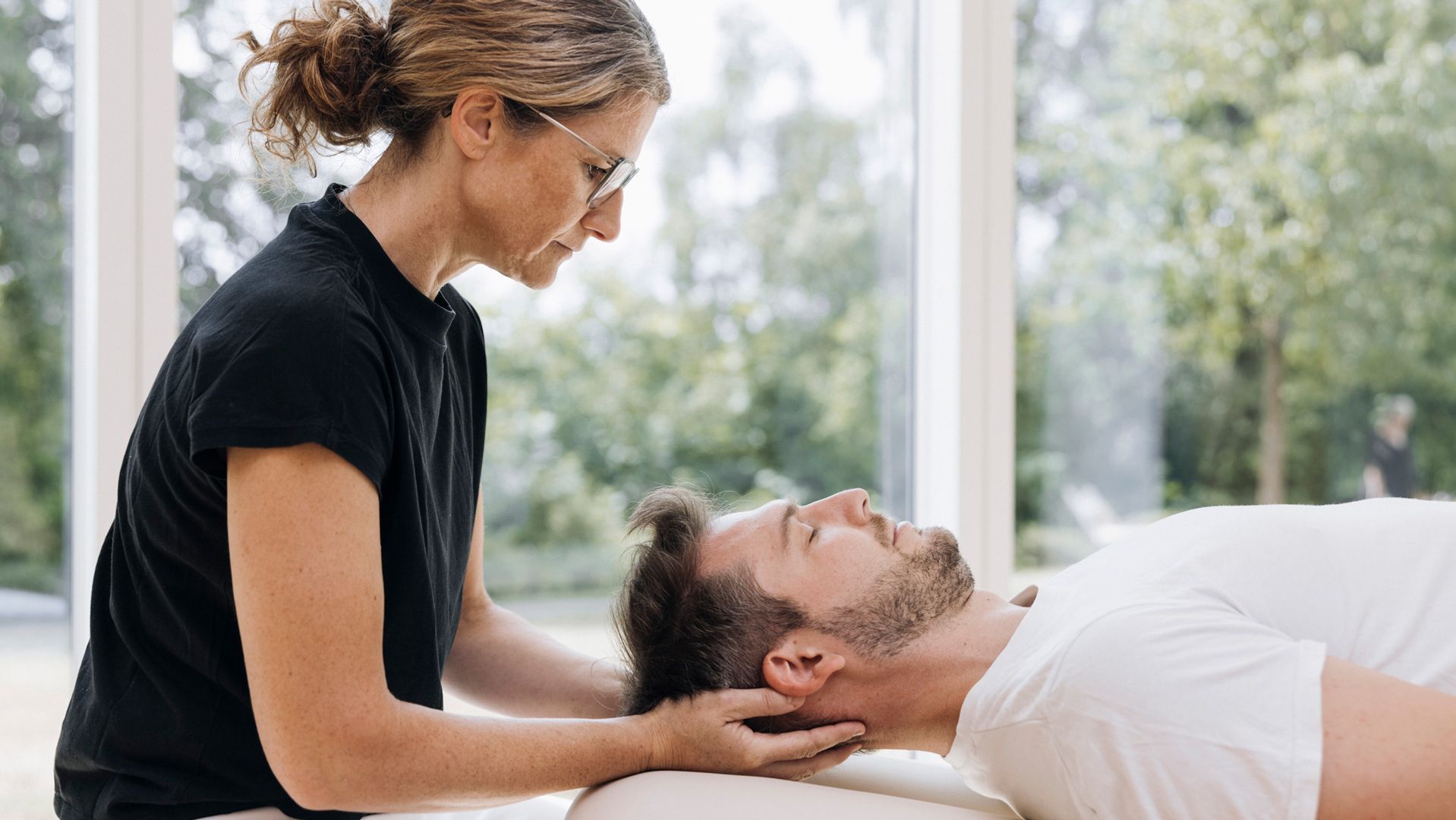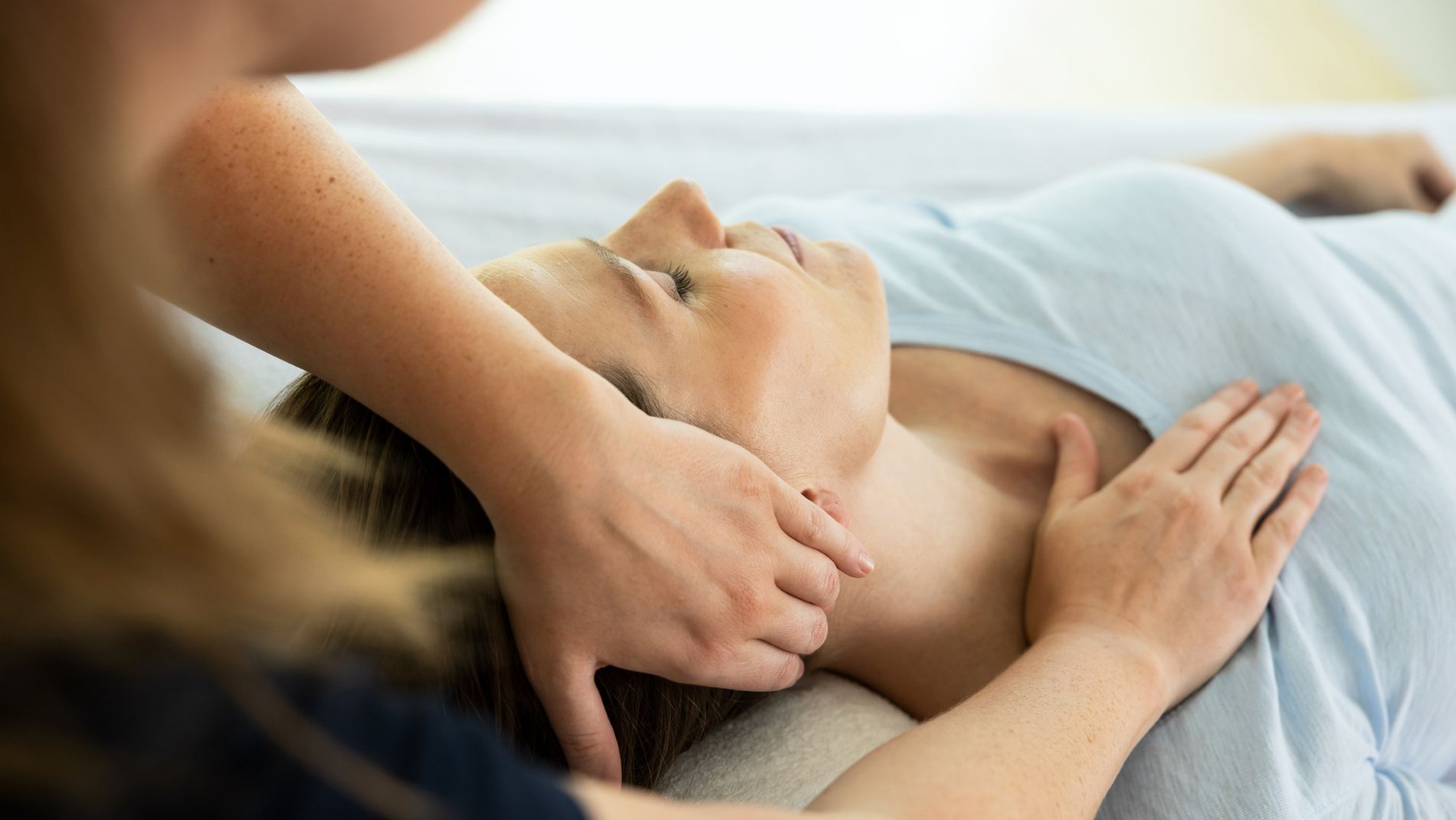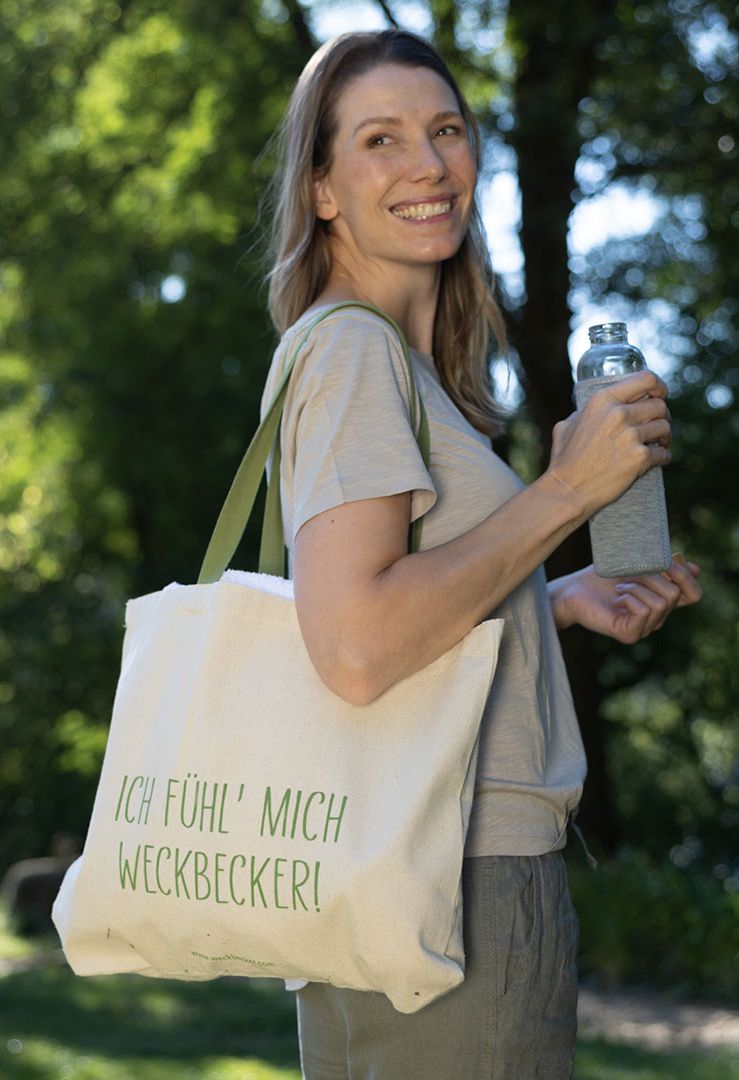EARLY WARNING SIGNS AND PREVENTION
In view of the high number of people affected, how can the onset of osteoarthritis be recognized and what early warning signs can our readers look out for?
PROF. DR. ANDREAS MICHALSEN:
Of course, pain is always an early warning sign of inflammation and osteoarthritis. An incipient restriction in the mobility of the joint can also be an indicator. Then, of course, the diagnostic methods of X-ray, MRI and ultrasound are important.
On the other hand, at the first signs of osteoarthritis, it is important to make sure that you do not make movements that are too one-sided during sport. For example, two hours of cycling is certainly good cardiovascular training, but it is a very monotonous strain on the joint. It is better to make full use of the joint's range of motion and exercise the entire range of motion of the joint through physiotherapy, yoga and stretching, for example.
What advice on early detection can you give our readers, Dr. Matejka?
DR. MED. RAINER MATEJKA:
A simple indication is the initial pain, which improves after a few minutes of movement. If osteoarthritis has been present for a long time and the joint in question is continuously overloaded, activated osteoarthritis can also occur, which can then be accompanied by inflammatory swelling. This phenomenon is more common in the area of the knee joint.
And how can the risk of osteoarthritis be reduced? What can the reader do preventively in everyday life?
DR. MED. RAINER MATEJKA:
A good preventative measure is to train the muscles, which gives the joints a natural bandage, as it were, as well as eliminating any static misalignments and, of course, the WHO criteria: maintaining a normal body weight, not eating red meat all the time and regular exercise such as running or swimming.
So-called ‘stop-and-go’ sports such as tennis or football, on the other hand, should be avoided if you are prone to osteoarthritis. Mountain hikes with steep descents are also unfavourable.
PROF. DR. ANDREAS MICHALSEN:
I think the two most important preventive measures are a healthy, wholesome and preferably plant-based diet - which also helps you to achieve a normal weight - and plenty of varied exercise as part of your daily routine.
A CRITICAL LOOK AT CONVENTIONAL MEDICINE & GUIDELINES
In the case of painful osteoarthritis, the current guidelines of the German Medical Association for Rheumatology recommend various therapies.
Prof Michalsen, what do you think is missing and how important is naturopathy in the current guidelines?
PROF. DR. ANDREAS MICHALSEN:
The guidelines are naturally very conservative and strictly evidence-based. The unfavourable consequence of this is that procedures for which not many studies can be carried out due to a lack of funding are regularly neglected.
Physiotherapy or nutrition are also often briefly mentioned, but these methods are not given adequate space in practice. It is therefore not surprising that the guidelines mainly mention painkillers, chemical anti-inflammatory drugs and surgery. Increasingly, the so-called TNF-alpha blockers, also known as monoclonal antibodies or ‘biologics’, are also mentioned.
However, a rethink is slowly taking place. We are also working with the German Society of Naturopathy to raise awareness of naturopathic treatments when drafting guidelines.
OUR RECOMMENDATION FOR YOUR STAY WITH BACK AND JOINT COMPLAINTS
RECOMMENDATION REGARDING YOUR STAY
A stay at the Weckbecker Clinic is possible from 7 nights.
For guests with a focus on prevention and minimising individual risk factors, the clinic doctors recommend bookings of 10 nights or more.
For acute and chronic complaints, the stay should be at least 14 nights.
Our experts will also be happy to advise you by telephone on +49 9741 830 on the best length of stay for you.
INPATIENT VERSUS OUTPATIENT THERAPY
What therapeutic options do you use in your department at Immanuel-Hospital Berlin?
What advantages do you see in inpatient, integrative treatment?
PROF. DR. ANDREAS MICHALSEN:
Inpatient treatment in the field of integrative medicine is enormously effective. We can synergistically combine different procedures. This not only adds up the effect, but as the saying goes: ‘The whole is more than the sum of its parts’.
In concrete terms, this means that most of our patients fast or have a calorific restriction as a nutritional therapy and then a plant-based diet when building up their diet. This is combined with cold/heat therapies, e.g. cold chamber, hyperthermia, Kneipp treatments, as well as intensive physiotherapy, special massages and manual therapies.
Stress reduction through mind-body medicine and special medical procedures such as leech therapy, acupuncture or Ayurveda treatments are also used.
In the case of inpatient therapy, we can also customise the whole process to achieve the greatest possible effect.
How is the osteoarthritis patient treated at the Malteser Klinik von Weckbecker?
DR. MED. RAINER MATEJKA:
Our osteoarthritis patients receive the necessary metabolic relief mentioned above, usually through fasting therapy over a longer period of time with a subsequent anti-inflammatory change in diet and moderate exercise as a basis. This is combined with other methods of empirical medicine, such as neural therapy according to Huneke (an injection therapy in the area of the joint capsule with local anaesthetics, usually in combination with special naturopathic preparations also known in sports medicine) or acupuncture massage according to Penzel.
Targeted manual therapies and Kneipp irrigation are also helpful. With such a combined therapy, we often achieve more than would be expected according to official doctrine.

STUDIES AND ARTHROSIS
Prof Michalsen, which studies show that naturopathic treatments for osteoarthritis lead to success?
What studies would you like to see?
PROF. DR. ANDREAS MICHALSEN:
The study situation is generally better than is often thought. For example, we now have five studies on rheumatoid arthritis that prove the effectiveness of fasting, as well as studies on Mediterranean and plant-based diets.
There are also initial studies on osteoarthritis that point to the effectiveness of naturopathic treatments. For painful osteoarthritis in particular, we have data from high-quality studies on the effectiveness of leech therapy, acupuncture, Ayurveda therapy and cupping. Cupping, needle stimulation mats or connective tissue massages have also been proven to be effective for back pain, neck pain and other painful muscular tension.
Direct comparative studies with conventional therapy would of course be desirable. We are relatively certain that integrative treatment is superior to purely conventional treatment. But of course this needs to be proven in studies.
Dr Matejka, how do you assess the study situation on fasting and nutritional therapy for osteoarthritis?
DR. MED. RAINER MATEJKA:
As early as 1990, a well-done Norwegian study showed that fasting and a subsequent vegan diet can sustainably improve rheumatic inflammation, joint pain and stiffness and reduce the need for highly effective medication. We have orientated the nutritional therapy at the Malteser Klinik von Weckbecker in line with these findings.
LIMITS OF MEDICINE
Where do you see the limits of so-called conventional medicine and when are the limits of naturopathy reached?
PROF. DR. ANDREAS MICHALSEN:
So-called conventional medicine has made outstanding progress in recent decades. Surgical techniques in particular have become more precise and gentle, just as anaesthetic procedures are now safer than they were decades ago.
A lot has also happened in the field of drug therapy for inflammatory rheumatic diseases. Rheumatoid arthritis can now generally be controlled quite well with so-called biologics. These very expensive biologics do not cure the disease, but the symptoms are alleviated very favourably in many patients.
On the other hand, the increasing specialisation of conventional medicine, the tunnel vision, means that the holistic view of chronic complaints is increasingly lacking. It is not unusual for patients to have six to ten diagnoses and twenty tablets, and hardly any of the doctors treating them know how their therapy affects the other illnesses. The possibilities of non-pharmacological therapy, physical therapies and lifestyle medicine have also been criminally neglected. This is clearly the domain of naturopathy.
These can be used very successfully for almost all chronic diseases and especially for multimorbid conditions.
Naturopathy usually reaches its limits when the condition is very advanced or when the illness is acute. It goes without saying that a heart attack or acute appendicitis is not treated with naturopathy.
Where do you see the limits of naturopathy, Dr Matejka?
DR. MED. RAINER MATEJKA:
The limits of naturopathy are always reached when self-healing is no longer possible. Advanced illness and old age, for example, are limiting factors and, of course, acute medical emergencies.
The limits of conventional medicine, on the other hand, are that it often only addresses an arthritic problem symptomatically - for example with the long-term use of painkillers or surgery. A change in lifestyle with a healthier diet, the release of chronic tension and more exercise are still neglected.
And in my opinion, the topic of osteoarthritis is viewed far too localised and not systemically enough. The psyche also plays an enormous role in the complex process, especially when it comes to the main symptom of back pain.

